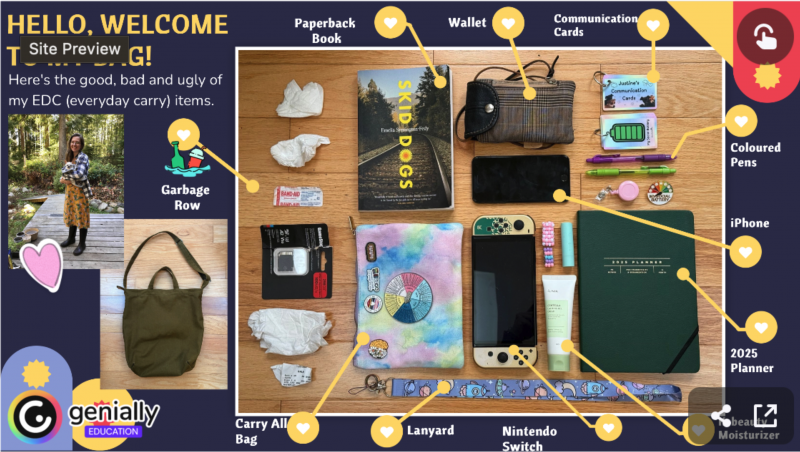copilot.microsoft.com
In approximately 500 words, describe or narrate a scenario about a pill found a decade into a future in which “progress” has continued. Your description should address issues related to class and elicit feelings of resentment.
“In the year 2035, technological advancement had exceeded expectations, reshaping societies and redefining the concept of progress. Among the myriad innovations was the emergence of a groundbreaking pill, heralded as “Ambitrol.” Marketed as the ultimate equalizer, the pill promised unparalleled cognitive enhancement—a way for individuals to unlock their full potential and accelerate their ambitions beyond imagination. But beneath the glossy advertisements and promises of utopia, the pill would become a bitter symbol of division.
Ambitrol’s creators claimed it was the pinnacle of human ingenuity, enabling users to absorb information instantaneously, develop abstract thinking, and boost creativity. It was said to be the solution to economic disparities—a way for anyone, regardless of background, to elevate themselves into the realms of the elite. But like most promises of progress, the reality was far more insidious. Ambitrol was exorbitantly priced, placing it out of reach for most of the population. For the wealthy, it became a status symbol, their minds rapidly honed by daily doses. They dominated high-paying professions, effortlessly mastering fields like biotechnology, artificial intelligence, and creative arts.
The middle class, now teetering on the edge of oblivion, scrimped and saved to afford even a single pill. Families pooled resources, investing in one “chosen” member, gambling on their future. These sacrifices created heart-wrenching scenarios—parents giving up their own dreams to purchase a dose for their child, spouses forfeiting shared hopes in pursuit of advancement.
Below the middle class lay the working poor, denied even the pipe dream of Ambitrol. They became spectators in a cruel game, watching the gap between themselves and the elite widen with alarming speed. The enhanced minds of the wealthy and privileged dictated policies, created businesses, and advanced technologies with chilling detachment. Their discussions of automation and labor optimization erased the humanity of workers, treating them as obsolete relics of a bygone era.
In the shadows of Ambitrol’s success lay resentment, bubbling like a slow-boiling cauldron. The pill embodied the illusion of meritocracy, hiding the systemic inequities that had always defined society. Those denied access saw the gulf between themselves and the elite grow unbridgeable. Underground movements emerged, uniting those discarded by progress. They shared viral stories of Ambitrol-related scandals: reports of corrupt monopolies, brain damage from counterfeit pills, and secret deals between governments and corporations.
One day, a viral video captured an anonymous worker, reduced to cleaning an Ambitrol manufacturing plant, defiantly swallowing a stolen pill. Her monologue, raw and unfiltered, described the suffocating despair of watching others ascend while she remained rooted in despair. “Progress?” she scoffed. “Progress isn’t building a ladder and then pulling it up.”
As resentment festered, the illusion cracked. Ambitrol wasn’t just a pill—it was a reflection of a society designed to perpetuate inequality under the guise of progress. And in 2035, the question lingered: Was humanity truly advancing, or had it merely perfected the art of exclusion?”
___________________________________________________________
Reflection
AI-generated speculative narratives, such as the one about the Ambitrol pill, serve as reflections of human concerns, aspirations, and anxieties projected into future contexts. These narratives reveal not only the immense potential of artificial intelligence to expand the boundaries of imagination but also its power to amplify diverse voices, scenarios, and perspectives. By crafting complex “what-if” scenarios, AI enhances our ability to examine societal trends, envision alternate realities, and question the trajectory of our current path. This has profound implications for both imagination and education.
In terms of imagination, AI becomes a collaborator, providing new dimensions to creative thinking. Where human creativity might be shaped by personal biases or limited exposure, AI offers an expansive and sometimes unexpected take on storytelling. It introduces speculative possibilities that push beyond familiar boundaries, encouraging humans to explore ideas they might not have considered otherwise. As seen in the narrative above, AI doesn’t just mimic; it crafts narratives with depth, subtlety, and emotional resonance, making it a tool for creative exploration rather than replacement.
This evolution in imagination dovetails into the realm of education. As education systems evolve to meet the challenges of a rapidly changing world, AI-generated narratives can act as prompts for critical thinking, debate, and interdisciplinary learning. Stories like the Ambitrol scenario are rich with opportunities for discussion. Students can analyze the ethical, social, and economic dimensions presented in the story, fostering skills such as systems thinking, empathy, and the ability to scrutinize the implications of innovation. Furthermore, such narratives expose students to the interconnectedness of technology and society, equipping them with the analytical tools needed to navigate—and shape—the future.
However, there’s a deeper implication: AI-generated narratives challenge traditional notions of authorship and creativity. They prompt educators and learners alike to question what it means to “create.” If machines can imagine on our behalf, should the role of humans shift to guiding, curating, and contextualizing these creations? This new paradigm emphasizes the importance of understanding how AI operates, its ethical boundaries, and its capacity for both insight and blind spots.
Ultimately, AI-generated speculative fiction illuminates the symbiotic relationship between humans and technology. It encourages us to harness AI as a tool for expanding our imaginative horizons while also reminding us to stay rooted in human values. Education’s role in this future is not merely to teach students to engage with AI but to empower them to ask the right questions, interpret its creations critically, and ensure that progress remains inclusive and humane. In this way, imagination and education intersect, using AI as a bridge to reimagine a better future while acknowledging the complexities of getting there.




